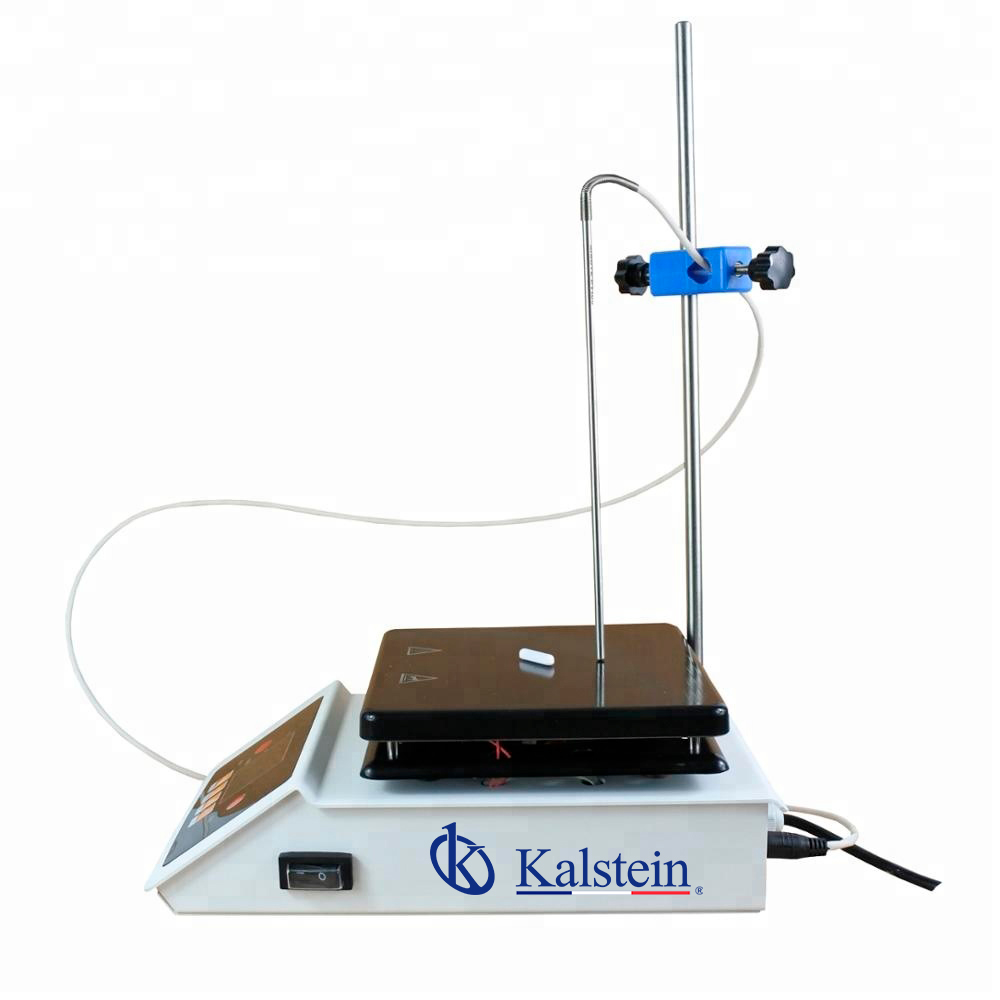All laboratories use at least one heating plate for their daily operations. However, the use of heating plates in the laboratory is not limited to this. In fact, heating plates can be used for a variety of applications in the laboratory, such as sample preparation, testing and product storage.
Although heating plates are extremely useful in the laboratory, they can also be dangerous if not used correctly. It is important to note that the heat generated by a heating plate can be very intense and, if a hot surface is touched, a severe burn can occur. Therefore, it is important to ensure that they are used correctly and are kept out of the reach of children and people unfamiliar with their use.
And in Kalstein we have the Heating Plate to be used in the laboratories for their various tests. Features: Top plate dimension (inches) 5.51 x 5.51. PID automatic temperature control. Round or square top plate shape. Ceramic type top plate material.
Main Functions
Although the use of a heating plate is very common in the laboratory, few really know how this machine works. In reality, the principle of operation is quite simple and based on the Joule’s Law. According to this law, when an electric current passes through a conductor, a heating occurs in the conductor. This heating occurs due to the resistance of the conductor to the passage of electric current.
The heating plate consists of an electrical resistor located on a metal part of the plate. This resistor is connected to a source of electrical power, which is usually the home power grid. By connecting it to the power source, an electric current will be allowed to pass through the resistor. This will cause the resistance to heat up and, in turn, heat up the metal plate.
The heating plate can be used to heat or melt a substance. To do this, place the substance on the board and then apply an electrical current to the board. The substance will heat up due to the passage of electric current through the plate. The rate at which the substance will be heated depends on the resistance of the plate, the electric current intensity and the time during which the electric current is applied.
Key Features
Most heating plates use an electrical resistance to generate the heat needed for their applications. This means that the heat is produced in a very small area and can be transferred very efficiently to the surface of the plate. This is especially important when used for laboratory applications, as precise temperature control is required.
Another feature that makes them especially useful in the laboratory is their ability to reach extremely high temperatures. In fact, some heating plates can reach temperatures as high as 1,000 degrees Celsius. This is especially useful for laboratory applications where high temperatures are required, such as preparing samples for analysis.
Kalstein brand heating plate
We at Kalstein offer you the best equipment that is ideal for any laboratory. We have at your disposal the Heating Plate belonging to the YR series, which has a stirring speed of 100-1800 RPM. Digital Shake Screen. Accuracy of the stirring speed of +/- 1 rpm. Permitted ambient temperature up to 40 °C. And many other attractive features, in which you can appreciate from our catalog at HERE At Kalstein, as manufacturers, we stand out in the market for providing integral solutions for any industrial sector, and for this we offer you the best advice to make your purchase ideal and at favorable prices. For more information, visit our website at HERE

